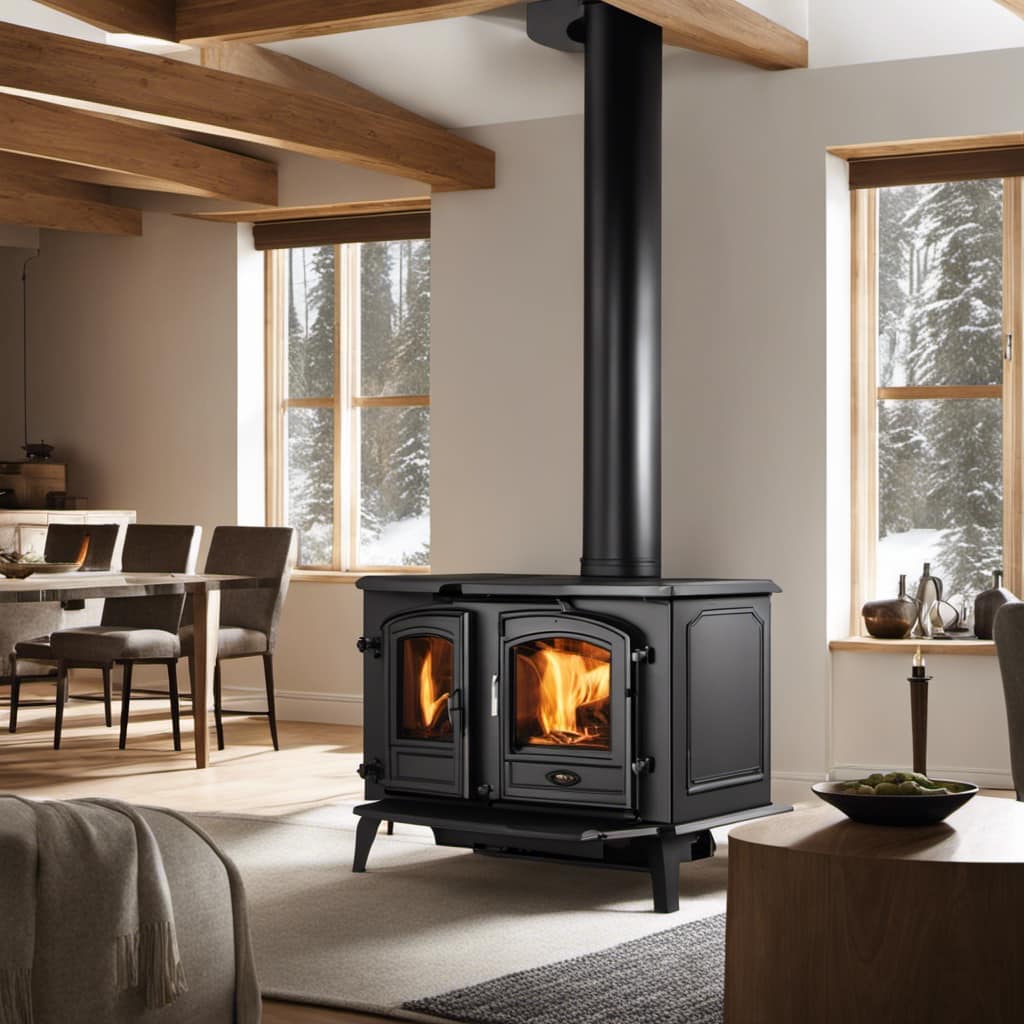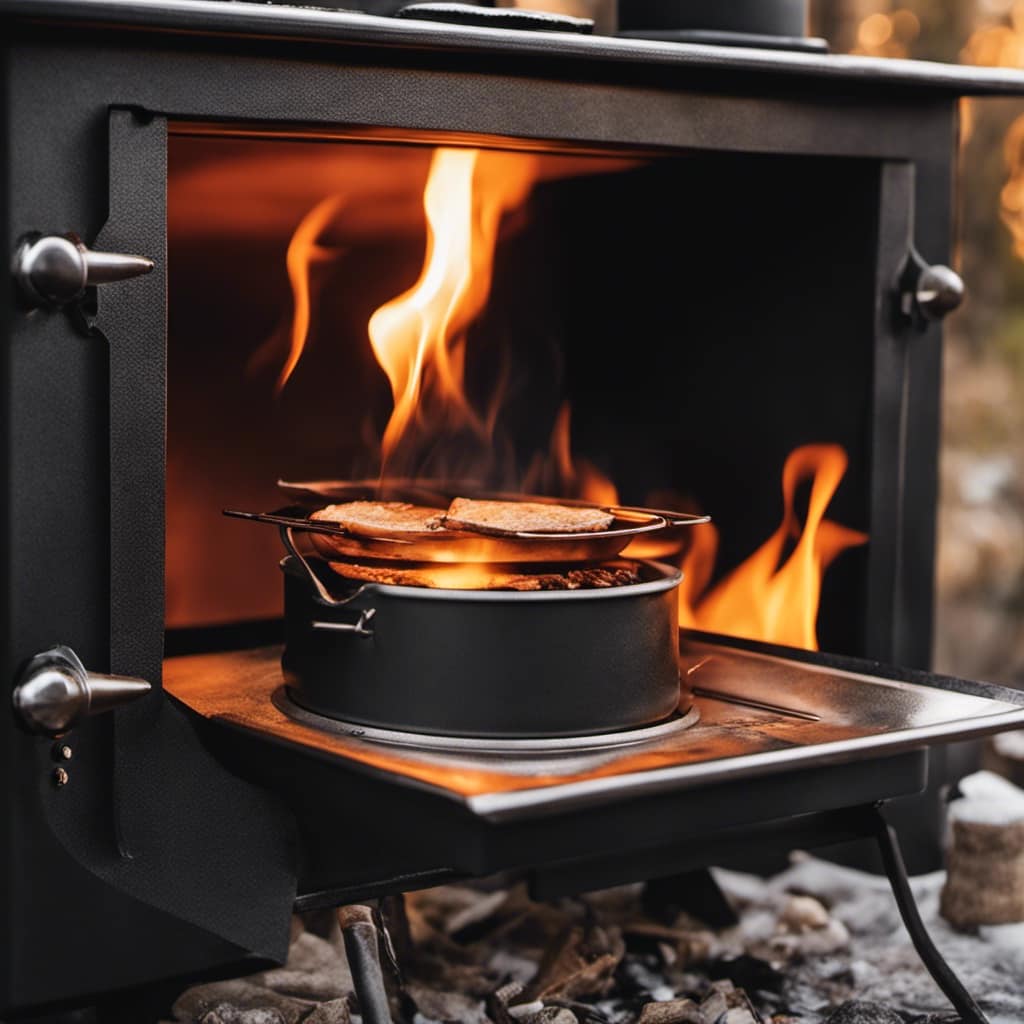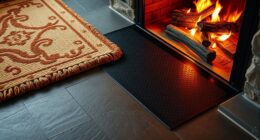I have always enjoyed the comforting heat of a wood stove, but the thought of putting in the stove pipe through the ceiling was quite intimidating. Surprisingly, it turned out to be simpler than I thought!
In this article, I’ll guide you through the step-by-step process of installing a wood stove pipe through your ceiling. From choosing the right location to ensuring proper ventilation, I’ll cover everything you need to know to safely enjoy the comforting heat of your wood stove.
Let’s get started!
Key Takeaways
- Check local building codes and regulations before installing a wood stove pipe through the ceiling.
- Measure the diameter and length of the stove pipe for a proper fit and secure all joints with high-temperature silicone.
- Prepare the ceiling by clearing debris, sealing gaps, and ensuring proper ventilation.
- Install the wood stove pipe through the ceiling using a fireproof support box, secure it with pipe brackets or screws, and ensure proper ventilation and safety measures are in place.
Choosing the Right Location for the Wood Stove Pipe
I personally think that it’s crucial to carefully consider the right location for the wood stove pipe. Selecting the proper insulation and maintaining a safe distance are key factors in this process. Here’s a step-by-step guide to help you choose the right location for your wood stove pipe.
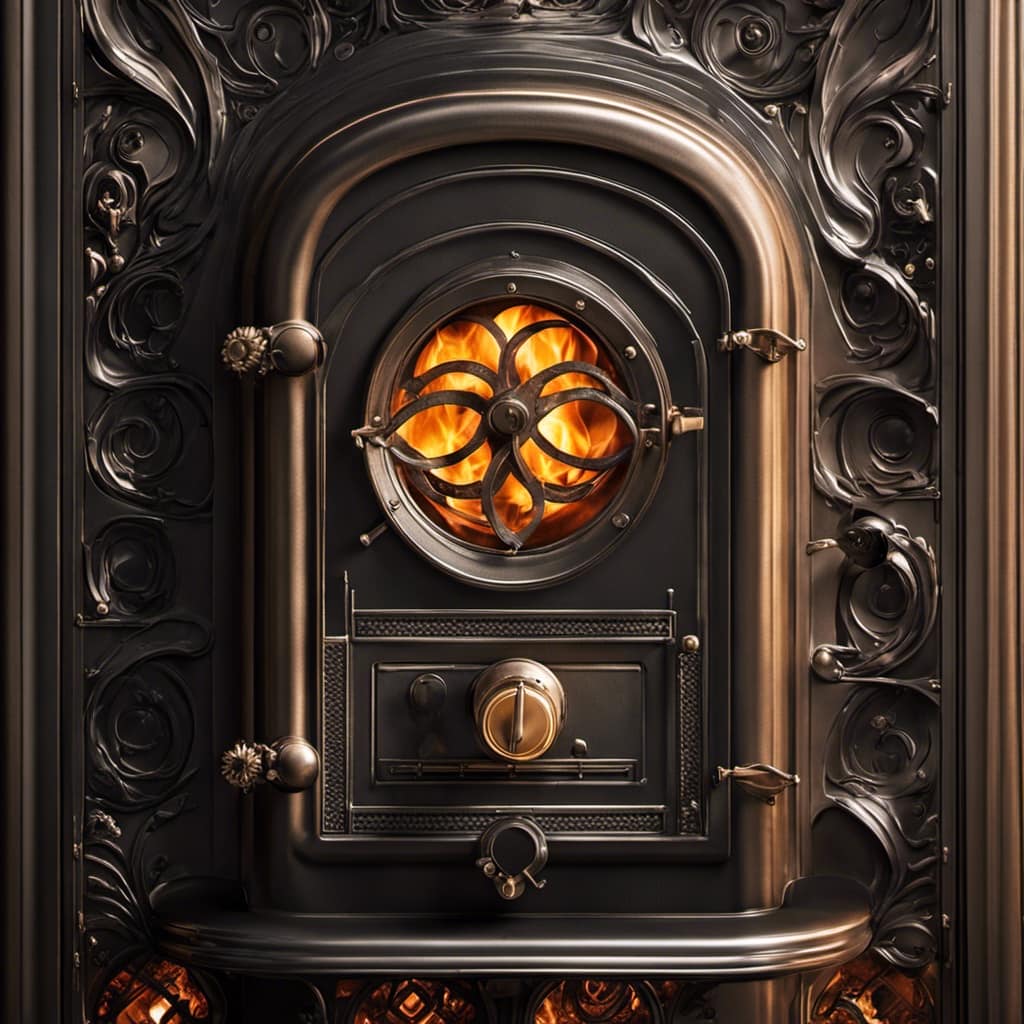
Check local building codes: Before starting the installation, make sure to familiarize yourself with the local building codes and regulations regarding wood stove installations. This will ensure that you comply with safety standards.
Determine the best route: Consider the layout of your home and choose the most direct and efficient route for the stove pipe. Take into account any obstacles, such as electrical wires or plumbing, and plan accordingly.
Maintain safe clearance: The stove pipe should maintain a safe distance from combustible materials. The recommended clearance varies depending on the type of pipe and local regulations, but typically ranges from 18 to 36 inches.
Insulate properly: To prevent heat transfer and reduce the risk of fire, it’s important to select proper insulation for the wood stove pipe. Insulation materials such as ceramic fiber or mineral wool can be used to provide a protective barrier.
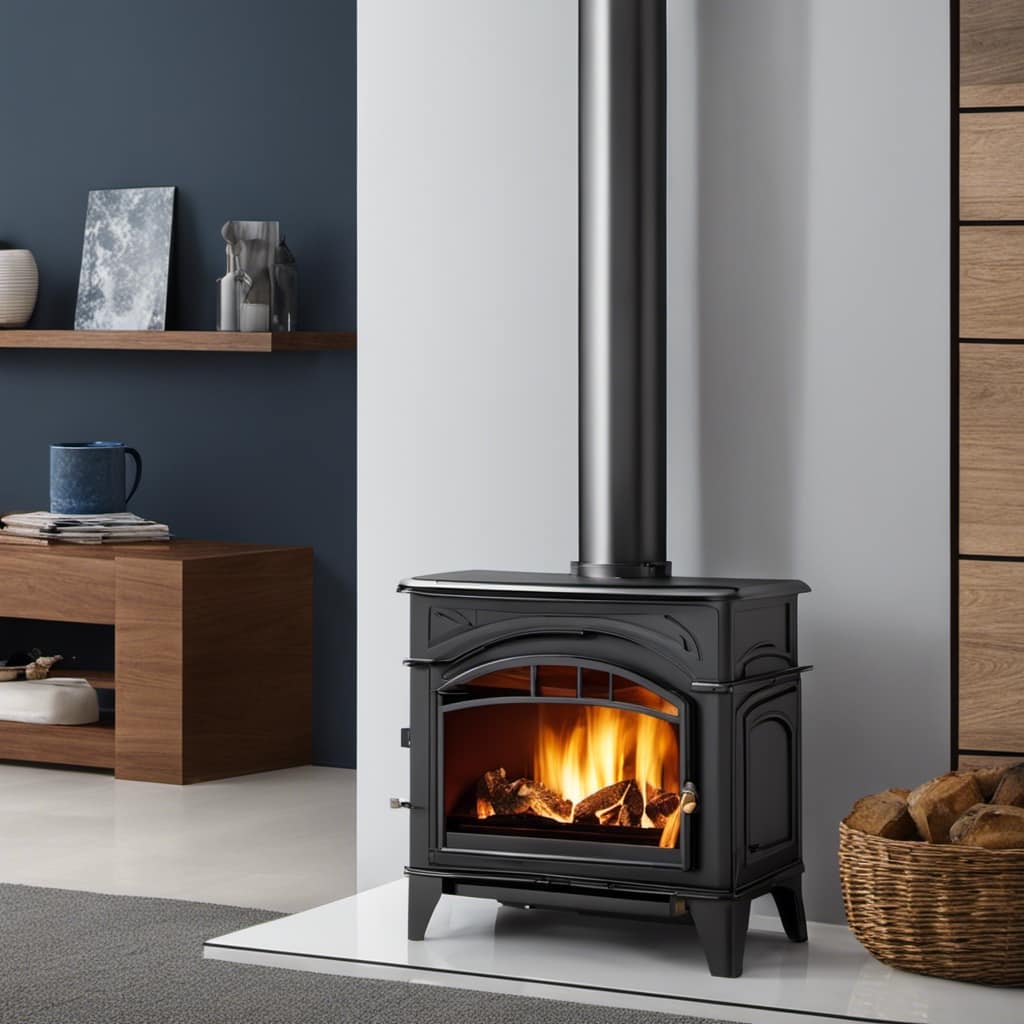
Gathering the Necessary Tools and Materials
To begin the installation process, I need to gather the necessary tools and materials, such as a drill and screws.
Measuring accuracy is crucial for a precise wood stove pipe installation. Firstly, I’ll measure the diameter of the stove pipe to ensure a proper fit.
Next, I’ll measure the distance from the stove to the ceiling. This measurement will determine the length of the pipe needed.
It’s important to avoid common mistakes during wood stove pipe installation. One common mistake isn’t properly sealing the joints. I’ll ensure that all joints are securely connected and sealed with high-temperature silicone.
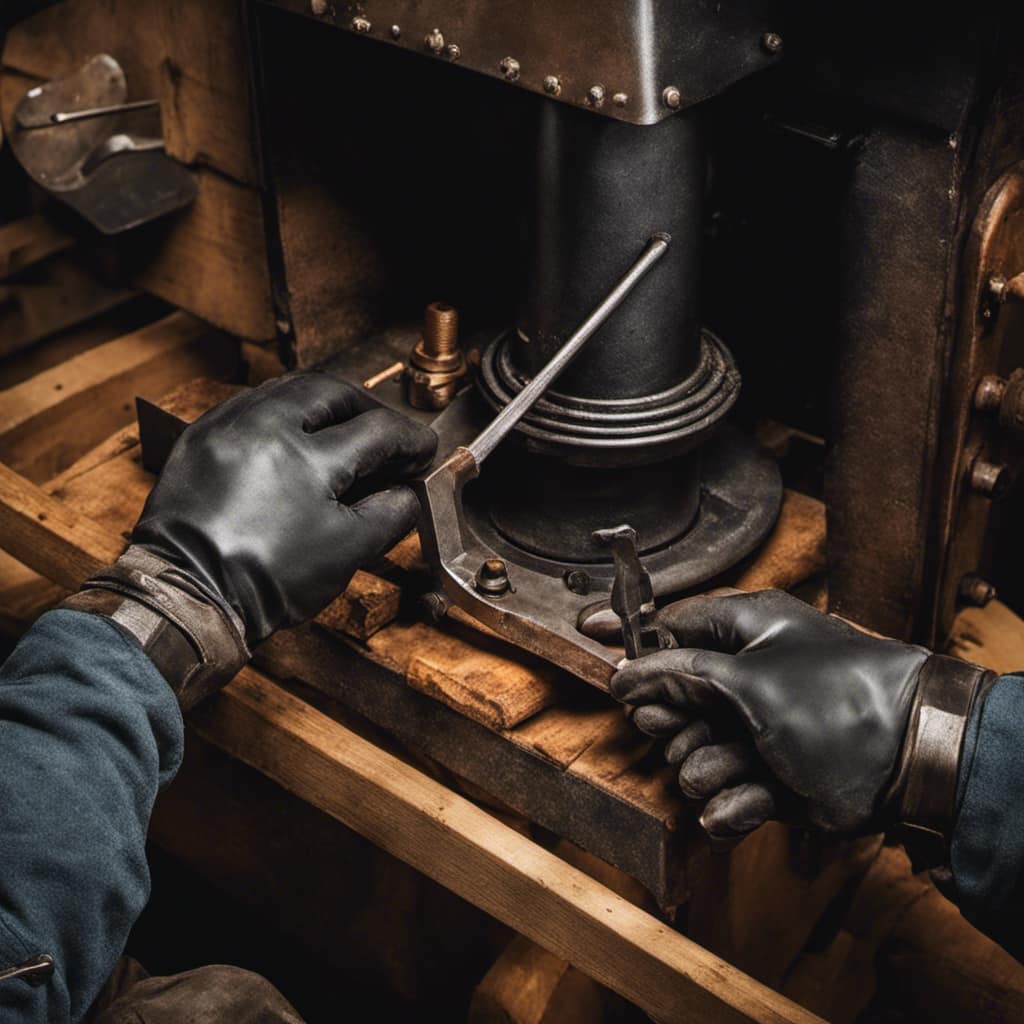
Additionally, I’ll avoid placing the pipe too close to flammable materials.
Preparing the Ceiling for Installation
Before beginning the wood stove pipe installation, it is important to ensure that the ceiling is properly prepared by clearing any debris or obstructions. This step is crucial in order to create a safe and efficient installation. Start by inspecting the ceiling for any loose or hanging objects, such as old wires or damaged plaster. Remove these items and make sure the area is clear.
Next, check for any gaps or openings in the ceiling that could allow heat or smoke to escape. It is essential to seal these gaps to prevent any potential hazards. Use a high-temperature sealant to cover insulation and seal any cracks or holes. This will help maintain the integrity of the installation and ensure proper ventilation.
To provide further guidance, here is a table summarizing the steps to prepare the ceiling for wood stove pipe installation:
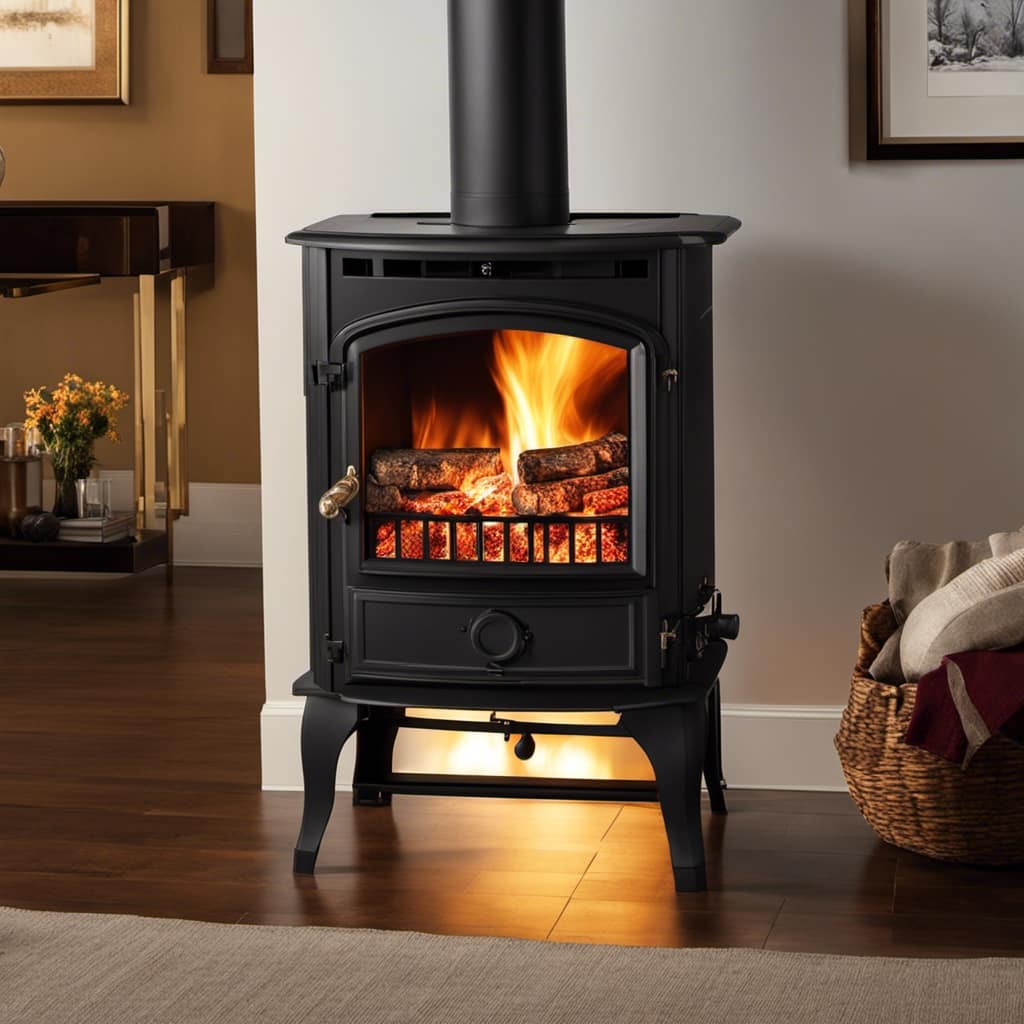
| Step | Actions |
|---|---|
| 1 | Clear the ceiling of debris and obstructions |
| 2 | Inspect for any gaps or openings in the ceiling |
| 3 | Cover insulation and seal gaps with high-temperature sealant |
Installing the Wood Stove Pipe Through the Ceiling
The installation process involves carefully positioning the wood stove pipe through the ceiling, ensuring a secure and efficient connection. Here are the steps to install a wood stove pipe through the ceiling:
Start by measuring the distance from the stove to the ceiling, and purchase a pipe that fits this length.
Place a fireproof ceiling support box above the stove, ensuring it’s centered and securely attached.
Connect the stove pipe to the support box, using a locking clamp to hold it in place.
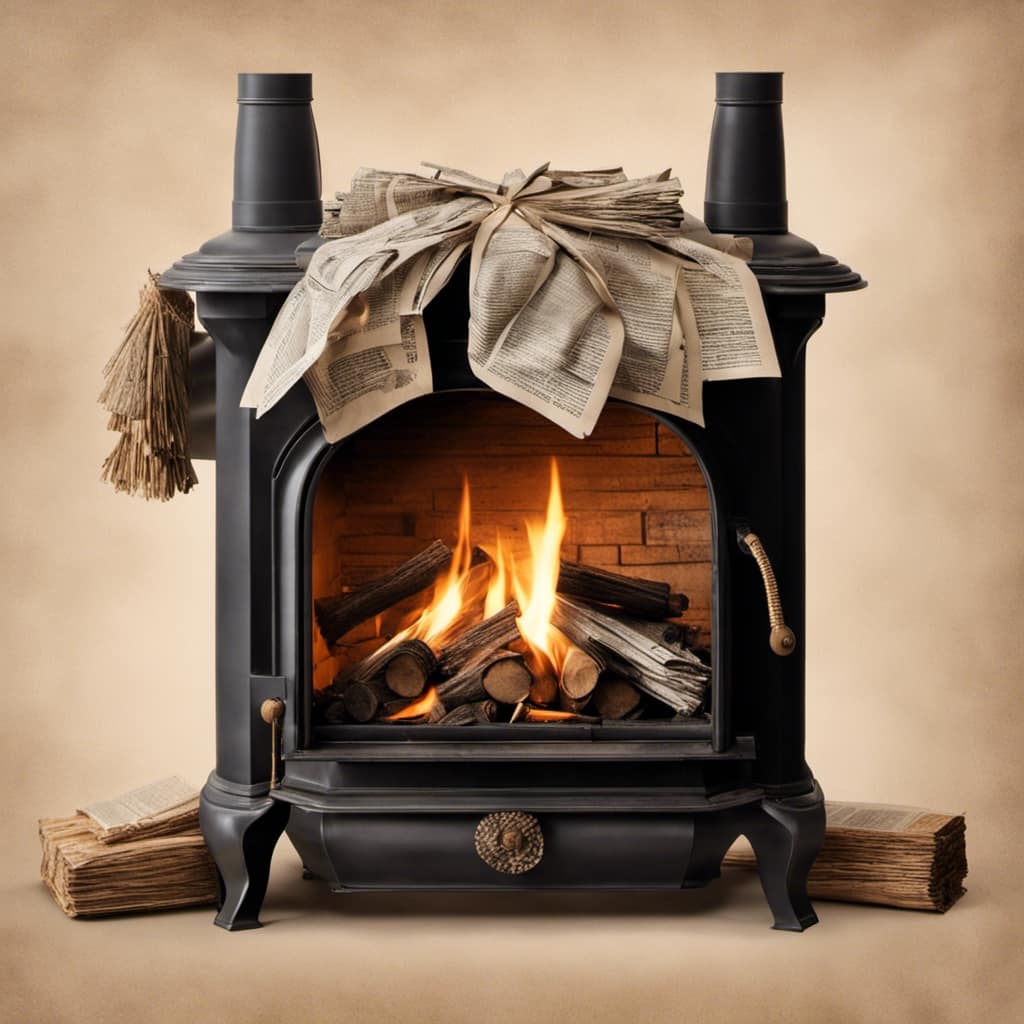
Extend the pipe through the ceiling, making sure it’s straight and level.
Secure the pipe to the ceiling joists using pipe brackets or screws, ensuring it’s stable and won’t move.
Install a ceiling trim collar around the pipe where it exits the ceiling for a finished look.
Remember to clean the wood stove pipe regularly to prevent creosote buildup, and check for any leaks or damage. These maintenance tips will help ensure the safety and efficiency of your wood stove installation.

Ensuring Proper Ventilation and Safety Measures
How can I effectively ensure proper ventilation and safety measures when installing a wood stove pipe through the ceiling?
Installing a wood stove pipe through the ceiling requires careful consideration of ventilation and safety measures. Here are four steps to ensure proper installation:
Plan the location: Determine the best spot for the wood stove pipe, considering proximity to combustible materials and building codes.
Install a fireproof ceiling support box: Place the support box securely to provide stability and prevent heat transfer to the surrounding ceiling.
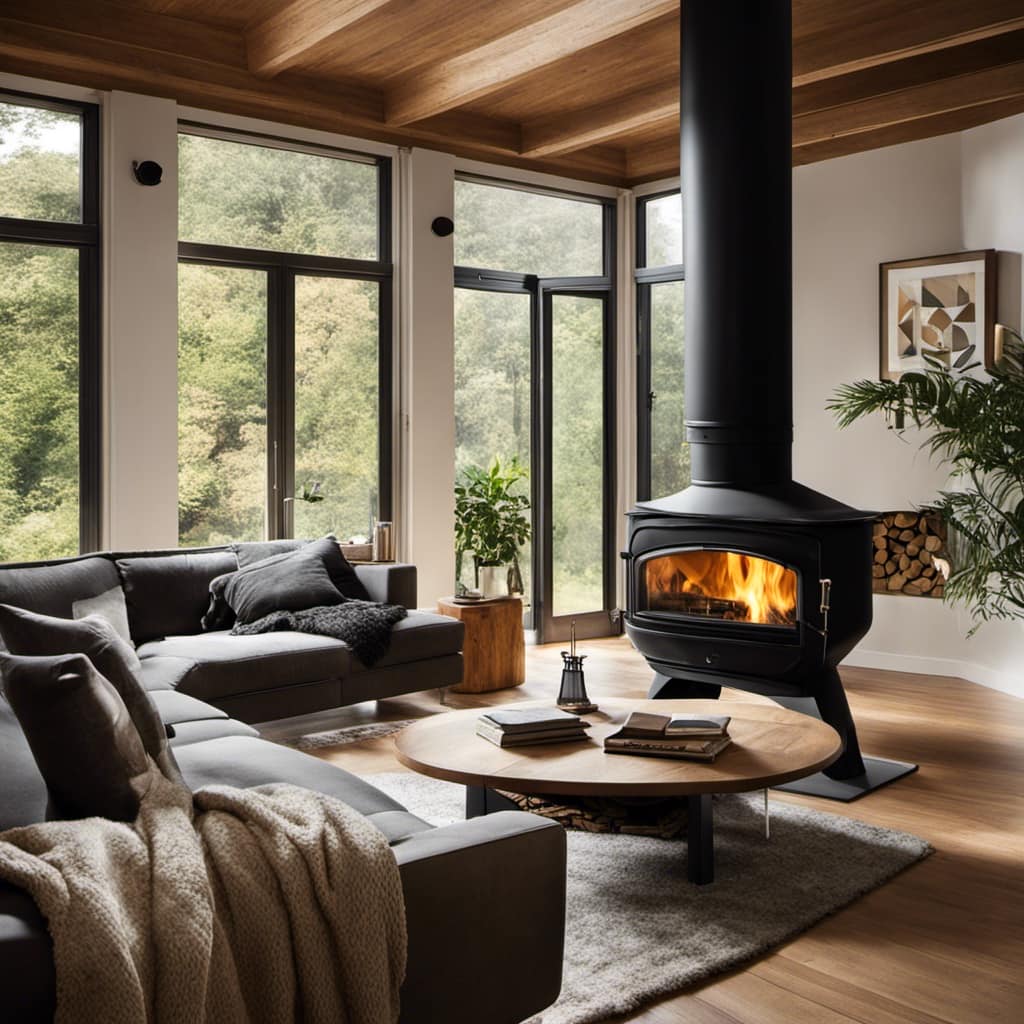
Use proper clearance: Ensure the wood stove pipe has the required clearance from combustible materials, such as walls or insulation. Use appropriate heat shields if needed.
Install a chimney cap: Prevent water, animals, or debris from entering the chimney by installing a chimney cap. Regularly inspect and clean to maintain proper airflow.
Frequently Asked Questions
How Do I Determine the Correct Size and Type of Wood Stove Pipe for My Installation?
To determine the correct size and type of wood stove pipe for my installation, I consider factors like the size of the stove, the layout of my home, and local building codes. It is important to avoid installation mistakes and regularly clean and maintain the pipe.
What Are the Common Mistakes to Avoid When Installing a Wood Stove Pipe Through the Ceiling?
Common mistakes when installing a wood stove pipe through the ceiling include improper measurements, lack of insulation, and forgetting to secure the pipe properly. Here are some tips to avoid these errors.
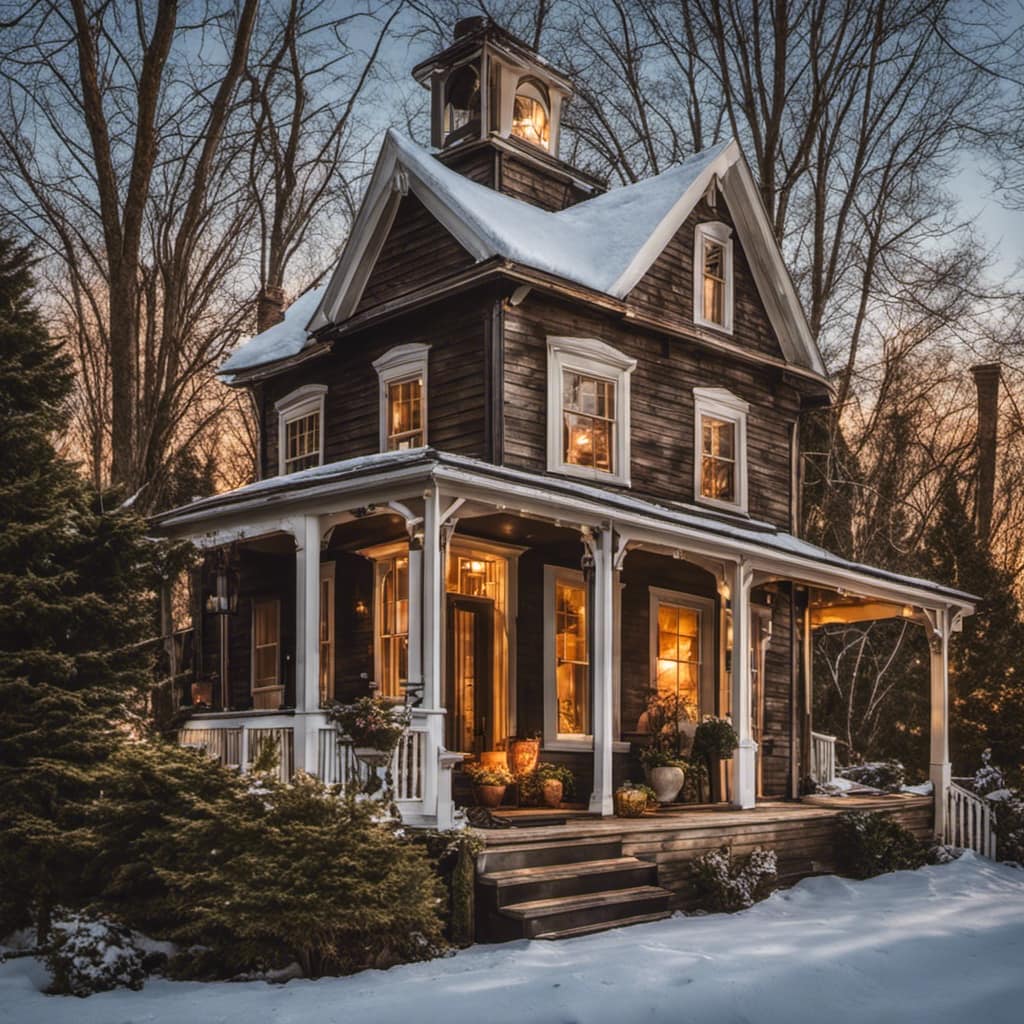
Can I Install a Wood Stove Pipe in a Multi-Story Home, or Is It Only Suitable for Single-Story Houses?
In a multi-story home, installing a wood stove pipe requires careful consideration for safety. Factors such as proper clearance, fireproofing, and structural support must be addressed to ensure a safe installation.
Are There Any Specific Building Codes or Regulations I Need to Follow When Installing a Wood Stove Pipe Through the Ceiling?
When installing a wood stove pipe through the ceiling, it is important to follow specific building code requirements and safety precautions. These regulations ensure proper installation and reduce the risk of fire hazards.
How Often Should I Clean and Maintain My Wood Stove Pipe to Ensure Optimal Performance and Safety?
To ensure optimal performance and safety, I clean and maintain my wood stove pipe regularly. Signs of a clogged or damaged pipe include decreased efficiency and smoke leakage. Regular cleaning prevents these issues.
Are the Installation Steps for a Wood Stove Pipe Through a Cathedral Ceiling Different from a Regular Ceiling?
Yes, the installation steps to install wood stove pipe through cathedral ceiling differ from those for a regular ceiling. When dealing with a cathedral ceiling, you will need specialized components and techniques to properly navigate the angles and accommodate for the increased height.
Conclusion
Installing a wood stove pipe through the ceiling requires careful planning and proper execution to ensure safety and efficient ventilation. By choosing the right location, gathering the necessary tools and materials, and preparing the ceiling, you can ensure a successful installation.
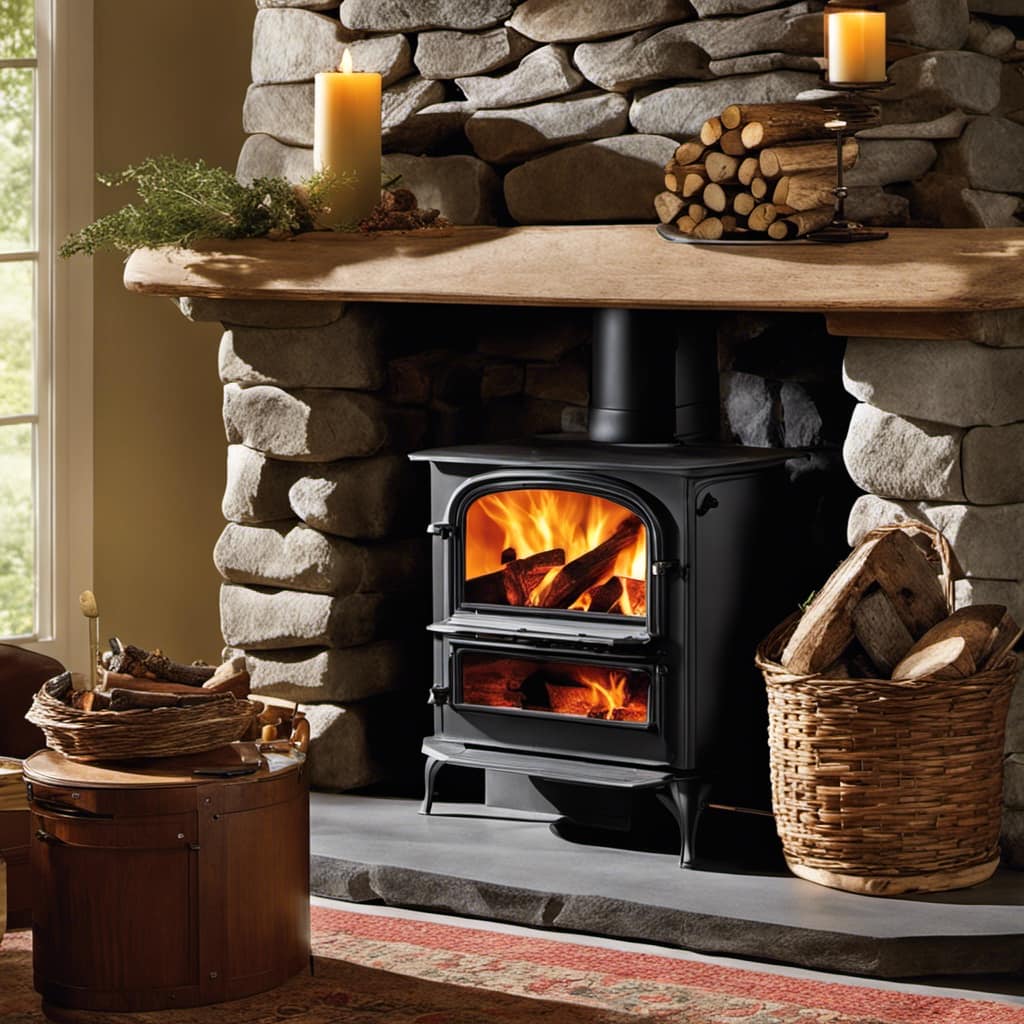
Once you have selected the location for the stove pipe, it is important to gather all the tools and materials you will need. This may include a tape measure, drill, screws, brackets, and the stove pipe itself.
Before installing the pipe, it is essential to prepare the ceiling. This may involve cutting a hole in the ceiling to accommodate the pipe and attaching a support bracket to ensure stability.
Once the ceiling is prepared, you can begin installing the pipe. This should be done with precision, ensuring that each piece is securely connected and properly sealed.
By following these steps, you can enjoy the warmth and ambiance of a wood stove while maintaining a visually appealing and functional living space. Each step in the process contributes to a seamless and well-coordinated installation.
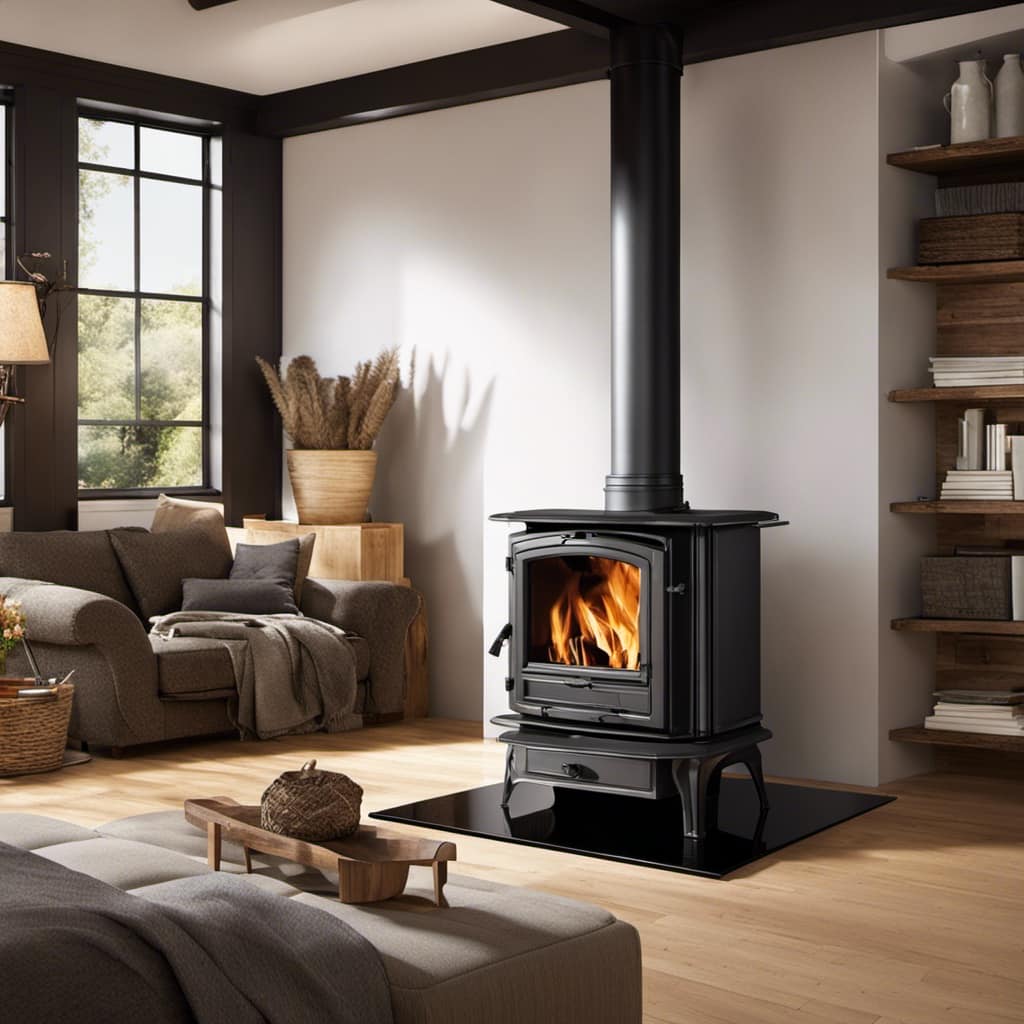
Growing up surrounded by the vast beauty of nature, Sierra was always drawn to the call of the wild. While others sought the comfort of the familiar, she ventured out, embracing the unpredictable and finding stories in the heartbeat of nature.
At the epicenter of every remarkable venture lies a dynamic team—a fusion of diverse talents, visions, and passions. The essence of Best Small Wood Stoves is crafted and refined by such a trio: Sierra, Logan, and Terra. Their collective expertise has transformed the platform into a leading authority on small wood stoves, radiating warmth and knowledge in equal measure.






